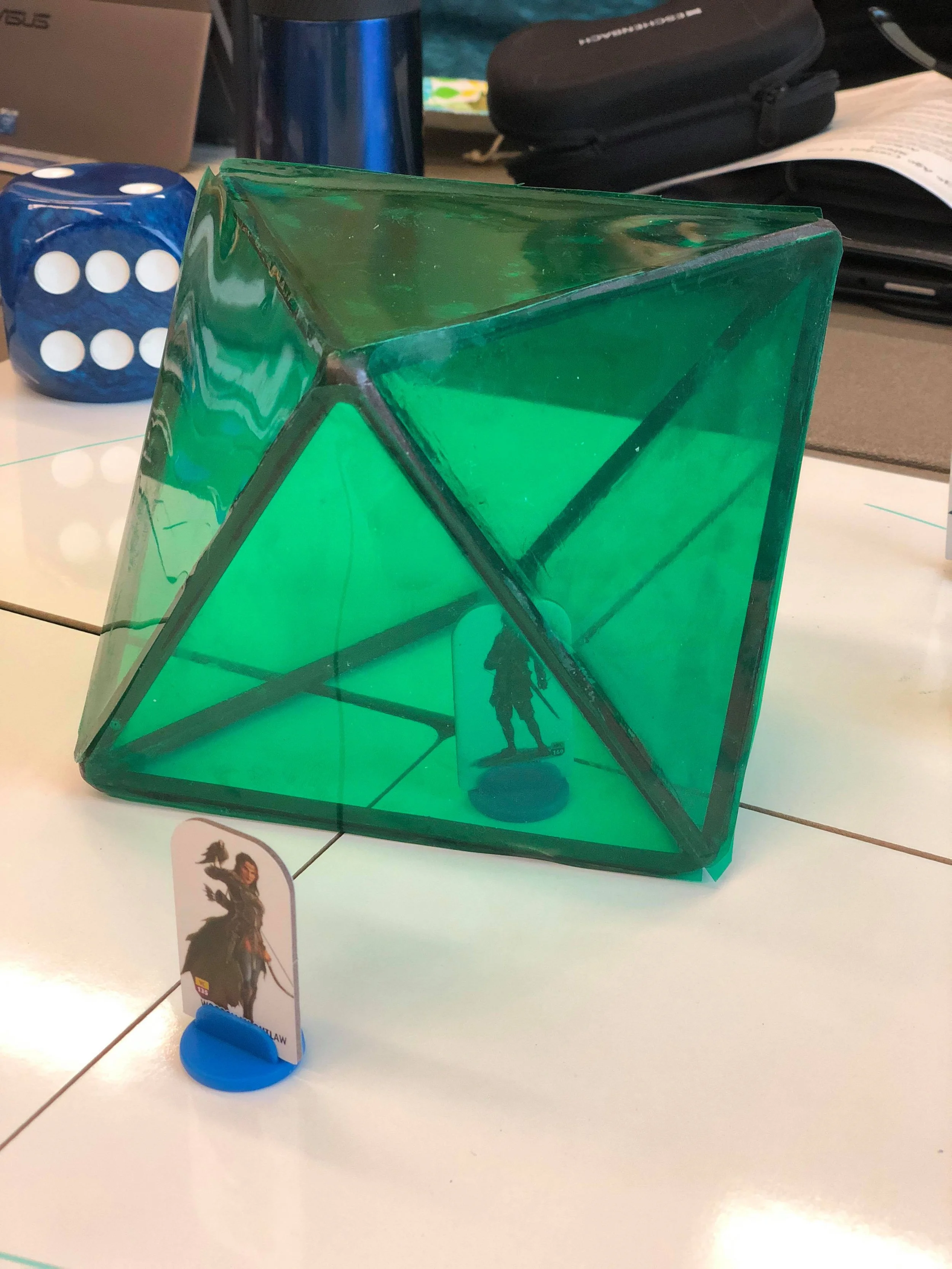Tactical, the Most Popular RPG Style
People talk about different kinds of tabletop roleplaying games: story based games, investigative games, and tactical games, to name three. For as long as the hobby has existed, tactical games have remained the most popular.
Why? What are the strengths and weaknesses of tactical games?
Rogue/Necromancer in a gelatinous octahedron.
Tactical?
A tactical tabletop roleplaying game is a game centered around a robust set of rules that focuses on combat. Combat with lots of options. Support for groups who want to play on a map of some kind, from a dry-erase battle-mat to a pricey but beautiful set of Dwarven Forge terrain. I’m talking D&D, Pathfinder, 13th Age, OSR, … the list goes on.
Evil Temples are fun
Tactical gaming means the players have a menu of choices for their character in combat. Where they move, what weapon or spell they use, how they use terrain to the best advantage. Players look for combinations of character powers that work best in any given situation.
Why So Popular?
The idea of heroic combat is exciting. Books, movies, and TV shows feature heroes doing heroic deeds in combat. Riding dragons, fighting monsters, using magic swords or Jedi lightsabers. Not realistic, but cinematic combat, is the fantasy. These games let everyone at the table take part in the excitement.
Players enjoy feeling a mastery of their character powers and the rules of combat. They take pride in how good they get. And the constant power-ups characters get in these games means they are always looking forward to being ever more effective combatants.
These cinematic fights assume the player characters win fight after fight. Sure it might seem dangerous for a bit, but they somehow always seem to come out on top. The rules are stacked in the player characters favor, enabling story-telling via a string of fights, much like a Marvel movie. A power fantasy.
The Cost
Nothing comes for free. Tactical games can be a load of fun, but there are downsides.
Outside of combat, the games can feel lackluster, making it hard to create stories based on anything but nonstop violence. Look at the amount of space on a D&D character sheet devoted to combat.
GM prep time is higher in tactical games than in other styles of roleplaying. Monster stat blocks are complicated, creating balance is hard, players expect tactical combat for most encounters, and there are minis and battle maps to prepare.
Managing fight after fight after fight can wear at a GM. Players can focus on just their one character, but the GM has to run a slew of monsters, all with their own quirks. Learning one monster often doesn’t help learn the another.
GM burnout. Many GMs get tired of the same old same old long before their players do.
Keeping the Fun Going
Every table is different, but these techniques work for many gamers. See what works for you.
Mix it up. Play a non-tactical RPG sometimes: Numenera, Call of Cthulhu, Vampire the Masquerade, Monster of the Week, Blades in the Dark, … Steal ideas from these and bring them back to your next tactical game.
Let someone else be GM for a while.
Go theater of the mind for the small fights, save the terrain and minis for the set pieces.
Embrace the excitement! When you are GMing a tactical game, go for it! Make combats as exciting as possible.
Use terrain that matters in combat.
Front load the badies. They don’t last long, so make them hit hard and fast.
When things turn into a slog, have the baddies surrender, run away, or just narrate the ending.
There’s a whole blog I should do on making combats spicy. Maybe two!
What do you think? Do you love tactical games? Hate them? Discus in the comments below.






